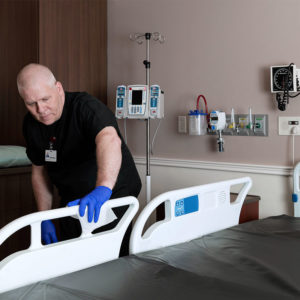Interventional Care


We notice that you are visiting us from . This site only services US-based visitors. Would you like to visit the site that is appropriate for your location?

On April 5, 2021, the Centers for Disease Control and Prevention (CDC) released revised guidance on cleaning and disinfecting of facilities every day and for when someone is sick with COVID-19. While this guidance is focused on community settings, there continues to be some confusion and misinterpretation regarding the cleaning and disinfection of healthcare facilities. The below Q&A is intended to clarify what is included in the revised guidance and reinforces the importance of proper cleaning and disinfection within healthcare facilities against SARS-CoV-2 and other important epidemiologic pathogens.
As questions surfaced from our customers for clarification, PDI reached out to our Director of Clinical Affairs, Debra Hagberg, to answer some top-of-mind questions regarding the revised guideline.
Hagberg: The targeted audience for this revised guidance is community building owners or operators. As stated within the guidance, “This guidance is not intended for healthcare settings or for operators of facilities such as food and agricultural production or processing workplace settings, manufacturing workplace settings, or food preparation and food service areas where specific regulations or practices for cleaning and disinfection may apply.”[1]
Hagberg: Yes, SARS-CoV-2 can contaminate and survive on environmental surfaces for some period of time, dependent on the type of surface and other environmental factors. The virus can enter a person’s body when hands touch a contaminated surface, and unwashed hands then touch a person’s eyes/mouth/nose. However, the primary mode of transmission is through respiratory droplets from one infected person to another when talking, sneezing, singing, coughing, etc.
Hagberg: The CDC believes that in most situations, the risk is low: “Because of the many factors affecting the efficiency of environmental transmission, the relative risk of fomite transmission of SARS-CoV-2 is considered low compared with direct contact, droplet transmission, or airborne transmission.”[2] Please visit the CDC website to learn more about the available science/research and the reasoning behind this change.
Hagberg: The guidance is quite extensive and broken down into several components, including [3]:
Hagberg: There are a few main takeaways that I would emphasize regarding this recent guidance:
*For more information on the PDI Products that are on EPA List N and have the SARS-CoV-2 claim, click here.
*For more information on the PDI Products that are on EPA List N and have the SARS-CoV-2 claim, click here.